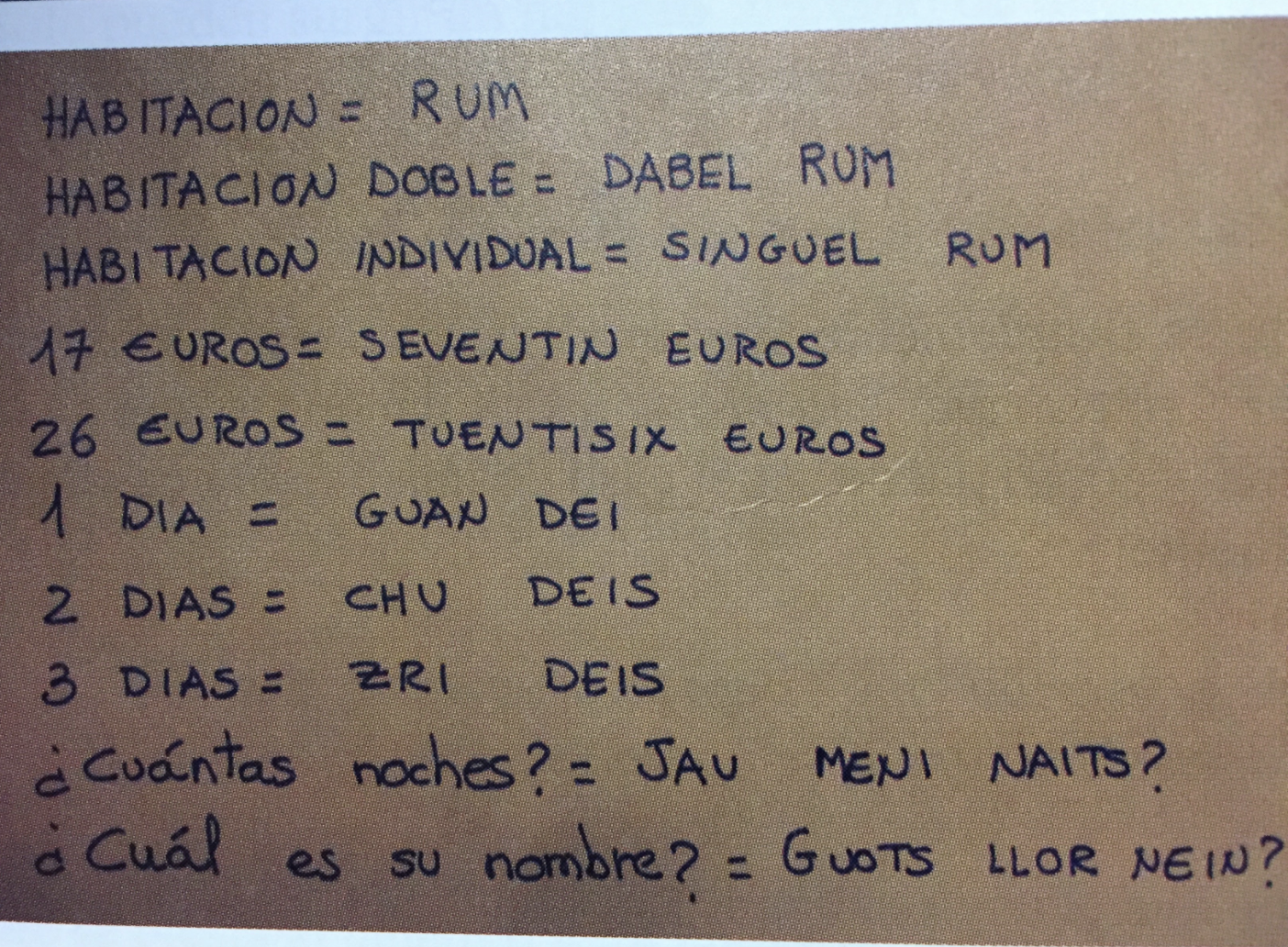1.3: Alfabetos ilegales, alfabetos imaginados
- Page ID
- 122085
Critical look at writing systems and how they encode language ideologies.
Alfabetos ilegales, alfabetos imaginados
Claudia Holguín Mendoza | University of California Riverside
Robert L. Davis | University of Oregon
- I can outline the process of codification of standard languages.
- I can cite examples of the arbitrary nature of writing systems.
- I can describe possible impacts of language codification on speakers of a language.
Study the strategies for getting more meaning from readings in another language. Keep these on hand as you work with texts in Spanish.
Actividad 1 | ¿Quién decide?
- When you play Scrabble or other word games, how do you decide if a word is “correct” or “acceptable”? What authority do you consult? When else do you consult this authority?
- Brainstorm examples of words and expressions that people say all the time but that might not be thought of as “correct”. How do you explain this mismatch between “correct” language and “the real world”?
- How is “correct” language decided? Who determines whether we should say or write “It is I” or “It’s me?” Let’s explore an especially interesting perspective on this question—in the history of the Spanish language.
Actividad 2 | Del “castellano” al “español”
You are going to read about how Castilian became “Spanish” (pp. 19-23 in Mar-Molinero, Clare (2000) The Politics of Language in the Spanish-speaking World. Routledge). First, study the following questions, and take notes on possible answers you find in the reading.
Paso 1 Before you read
- What is the “parent” language of Spanish? What languages could be considered its sisters?
- Have you heard of the term castellano (“Castilian”)? How does it differ from español (“Spanish”)?
Paso 2 As you read
- Compare your answers to the questions in Paso 1 with the information in the reading.
- Of the sister languages mentioned in the reading, why did Castilian become more important? In what sense was it deemed more important?
- What happened to the sister Romance languages of Iberia as Castilian grew in prestige? How might the speakers of those languages have perceived this process?
- When was the Real Academia Española founded? What was its purpose?
- What is the role of education in this process?
Actividad 3 | La norma establecida
Consider the following quote about the process of linguistic standardization (or codification):
“La codificación tiene el objetivo de reducir las variantes disponibles de la lengua en torno a la fonología, a la morfosintaxis y al léxico.”
(Goetz, R. La lengua española: Panorama sociohistórico, McFarland & Company, p.121)
Working with a partner, come up with positive and negative effects of the process of codification: what is gained or lost when a standardized language is imposed? Try to use the following terms in your answers. Which ones could involve both positive and negative aspects?
social control
political control
cultural identity
ease of communication
dictionary
written grammar book as a reference tool
commercial expansion
cultural dominance
cultural appropriation
|
Aspectos positivos de la codificación de la lengua |
Aspectos negativos del proceso de codificación |
|---|---|
Actividad 4 | ¿Un diccionario?
Read the following chart. Can you understand any of the words in any of the columns? Do you think there is any relation between the words on the left side and the right side? Do you think this list has a particular purpose?
|
PEDES |
FOOZI |
|
FIGIDO |
LEPARA |
|
PULLI |
HONIR |
|
PULCINS |
HONCHLI |
|
CALLUS |
HANO |
|
GALINA |
HANIN |
|
PRIDIAS |
UUANTI |
|
MUFFLAS |
HANTSCOH |
|
IMPLENUS EST |
FOL IST |
|
MANNEIRAS |
PARTA |
|
MARTEL |
HAMAR |
|
PUTICLA |
FLASCA |
|
FIDELLI |
CHALPIR |
|
FOMERAS |
UUAGANSO |
|
RADI MEO PARBA |
SKIR MINAN PART |
Adapted from Kalmar (2001)
This is actually an excerpt from an ancient dictionary. Linguists found that it was used by people who spoke a very old Germanic language (right) in order to understand a variety of Latin (left). Do you think it was written in the commonly used spelling? How can you tell?
Actividad 5 | Una versión moderna
Now read the following chart. Can you understand any of the words in the columns? What language is represented in each column?
|
AVIVAC |
AHORITA REGRESO |
|
CAMVAK |
VOLVER |
|
TUMACH |
DEMASIADO |
|
MACH |
MUCHO |
|
LIMISI |
DEJAME VER |
|
AIDONO |
YO NO SE |
|
GUARIYUSEI |
QUE SE DICE USTE |
|
BROUKEN |
ROTO |
|
AIJEF |
TENGO |
|
GIMI |
DEME |
|
NODER |
NO HAY |
|
LRERO |
POQUITO |
|
JIT |
EL |
Adapted from Kalmar (2001)
Actividad 6 | Alfabetos originales
As a language student, have you ever written notes on the pronunciation of words in the language you are learning? Or in other words, have you ever created a phonetic/phonological dictionary for yourself?
What do you think about the pictures below? What similarities do you see with the ancient dictionary in Actividad 4, and the more modern dictionary in Actividad 5?



Actividad 7 | Un ejemplo más
Study the following incomplete chart. Try to guess the missing items. What language do you think is represented on the left? Who invented this manner of representing this language? Is this the “correct” spelling of these words?
|
XOCOLATL |
CHOCOLATE |
|
|
GUAJOLOTL |
||
|
AGUACATE |
||
|
PETATL |
||
|
COYOTL |
||
|
TÍÇATL |
TIZA |
|
|
CUAUHNAHUAC |
CUERNAVACA |
This language codification has invisibilized indigenous communities. Phonetic and phonological pronunciations from varieties of Náhuatl or other indigenous varieties are lost through the normalized and unquestioned use of the Spanish graphemes. This exercise has the potential of deconstructing language codification in many contexts more depending on students’ comments and other examples the instructor may find useful to include.
For more information, consult http://www.ancientscripts.com/aztec.html to see how the European (Spanish) approach to written representations of language differs from the indigenous writing system.
References
Kalmar, Tomás Mario (2015) Illegal Alphabets and Adult Biliteracy: Latino Migrants Crossing the Linguistic Border, second edition. Routledge.
Mar-Molinero, Clare (2000) The Politics of Language in the Spanish-speaking World. Routledge.
This work is licensed under a Creative Commons Attribution-NonCommercial-ShareAlike 4.0 International License.

